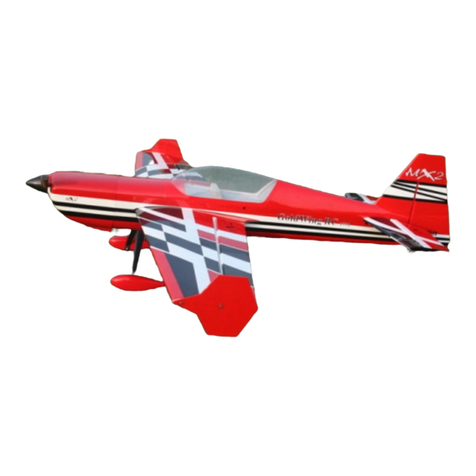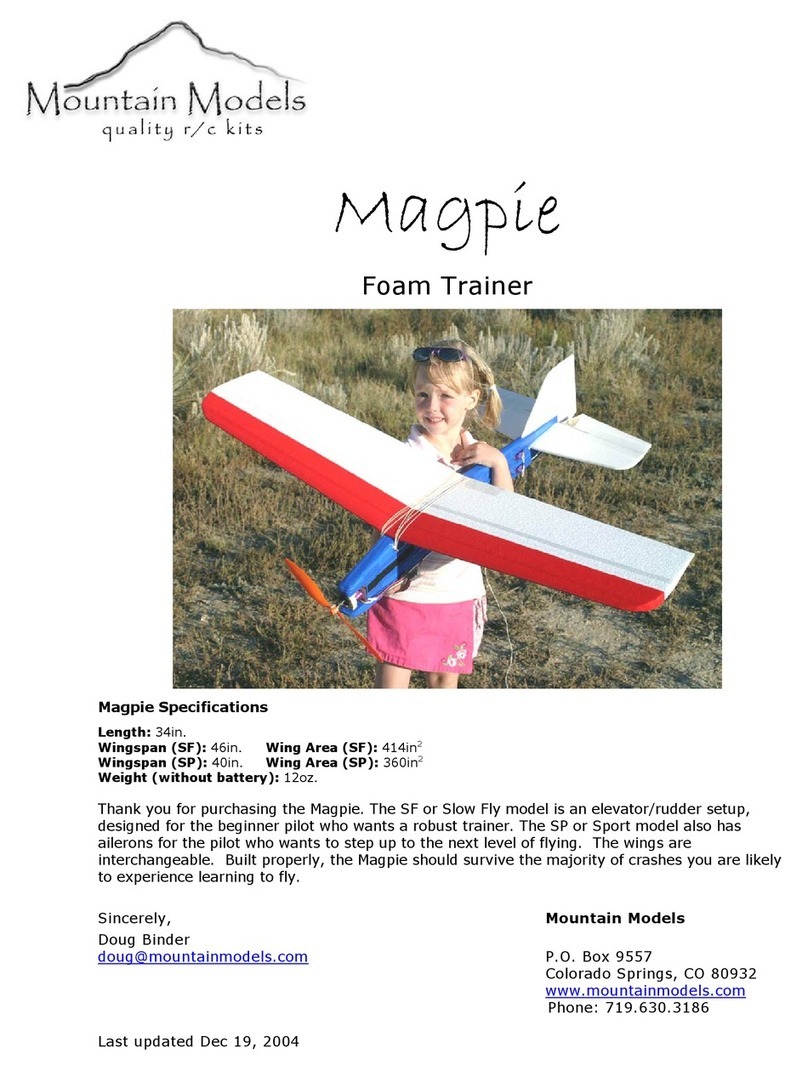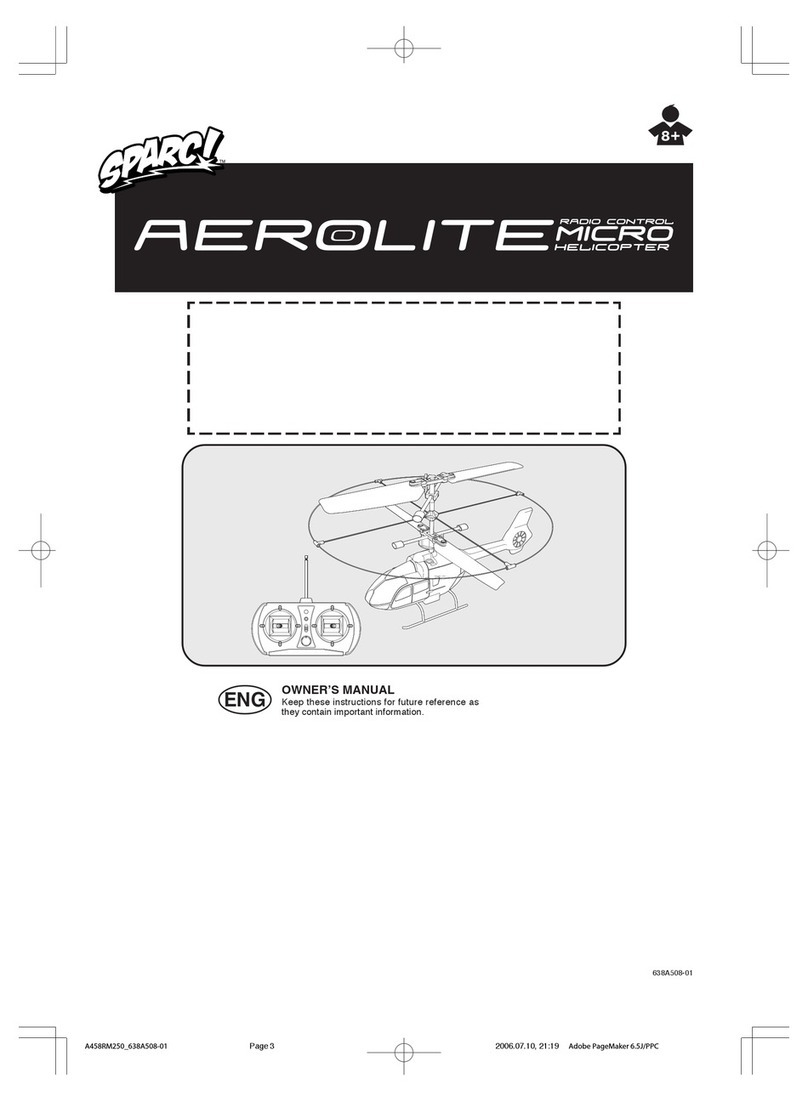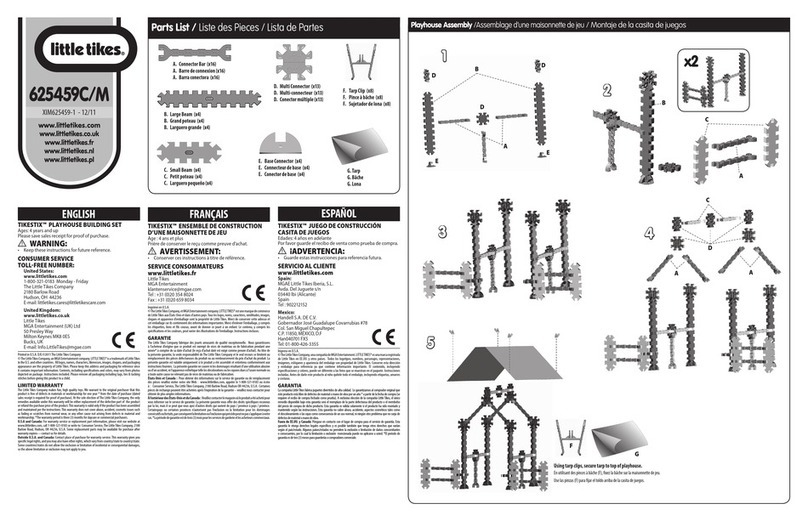Aeropro EuroFOX User manual

Production of UL Planes
Dlha 126, 949 07 NITRA Slovakia
www.aeropro.sk
Pilot Operating handbook
And
Flight training supplement
AEROPRO
EuroFOX

EuroFOX - Pilot Operating Handbook and Flight Training Supplement
May 1. 2019
0-2
Aircraft Model: EuroFOX 3K TOW
Serial Number: 56219
Registration: 4X - HSE
Date of Issue: May 1. 2019
Stamp, Signature
This aircraft was manufactured in accordance with Light Sport
Aircraft airworthiness standards and does not conform to standard
category airworthiness requirements.

EuroFOX - Pilot Operating Handbook and Flight Training Supplement
May 1. 2019
0-3
DATA OF THE AEROPLANES
Type
Country of
Production
Serial
Number:
Year of
production
Fuselage
EuroFOX 3K
TOW
AEROPRO
56219
2019
Engine
ROTAX 912
iS SPORT
BOMBARDIER-
ROTAX GMBH
AUSTRIA
7 704 724
2018
PROPELLER
DUC FC
DUC
HELICES
France
S/N: 160
2018
…………………………… ………………………………
Signature Stamp

EuroFOX - Pilot Operating Handbook and Flight Training Supplement
May 1. 2019
0-4
RECORD OF REVISIONS
Any revisions or amendments to the present manual shall be issued in the
form of bulletins with attached new pages. It is in the interest of every user
to enter such revision into the table of revisions and to replace the existing
page by the new one. The revised or corrected text shall be indicated by a
vertical line on left page margin and the page shall bear revision number
and date of its issue.
Rev.
No.
Pages Affected
Date of Issue
Bulletin
Number
New Page
Inserted On,
Signature
01
0-22, par 2.5
08/27/2019
N/A
Aeropro
02
Various
10/19/2019
N/A
Amnon harari

EuroFOX - Pilot Operating Handbook and Flight Training Supplement
May 1. 2019
0-5
TABLE OF CONTENTS:
0.1 INTRODUCTION....................................................................................0-9
0.2 CERTIFICATION BASIS .........................................................................0-9
0.3 MANUFACTURER .................................................................................0-9
0.4 WARNING,CAUTION AND NOTE..........................................................0-9
1. AIRPLANE AND SYSTEMS DESCRIPTION....................................1-10
1.1 ENGINE..............................................................................................1-11
1.2 PROPELLER........................................................................................1-12
1.3 FUEL AND FUEL CAPACITY.................................................................1-12
1.4 OIL ....................................................................................................1-13
1.5 OPERATING WEIGHTS AND LOADING (OCCUPANTS,BAGGAGE,FUEL,
BALLAST) ......................................................................................................1-14
1.6 COCKPIT OVERVIEW ..........................................................................1-15
1.7 OTHER EQUIPMENT............................................................................1-20
2. OPERATING LIMITATION................................................................2-21
2.1 STALL SPEED AT MAXIMUM TAKEOFF WEIGHT (VSAND VSO) ............2-21
2.2 FLAPS EXTENDED SPEED RANGE (VSO TO VFE)...................................2-22
2.3 MAXIMUM MANEUVERING SPEED (VA)..............................................2-22
2.4 NEVER EXCEED SPEED (VNE) .............................................................2-22
2.5CROSSWIND AND WIND LIMITATION ..................................................2-22
2.6 SERVICE CEILING...............................................................................2-23
2.7 LOAD FACTORS..................................................................................2-23
2.8 PROHIBITED MANEUVERS ..................................................................2-23
2.9 OTHER LIMITATIONS .........................................................................2-23
3. WEIGHT AND BALANCE INFORMATION.....................................3-25
3.1 INSTALLED EQUIPMENT LIST..............................................................3-25
3.2CENTER OF GRAVITY (CG) RANGE AND DETERMINATION..................3-25
3.2.1 Airplane weight and balance statement....................................3-26
3.2.2 Weight and balance determination for flight............................3-26
3.2.3 Detailed calculation of CG position ........................................3-27
4. PERFORMANCE...................................................................................4-29
4.1 TAKEOFF AND LANDING DISTANCES .................................................4-30
4.2 RATE OF CLIMB..................................................................................4-30
4.3 CRUISE SPEEDS..................................................................................4-30
4.4 RPM..................................................................................................4-31
4.5 FUEL CONSUMPTION ..........................................................................4-31

EuroFOX - Pilot Operating Handbook and Flight Training Supplement
May 1. 2019
0-6
4.6 OTHER PERFORMANCE DATA .............................................................4-31
5. EMERGENCY PROCEDURES............................................................5-32
5.1 INTRODUCTION..................................................................................5-32
5.2 ENGINE FAILURE AND EMERGENCY LANDINGS .................................5-32
5.2.1 Engine Failure during Take-Off Run........................................5-32
5.2.2 Engine Failure during Take-Off ...............................................5-32
5.2.3 In-flight Engine Failure............................................................5-33
5.2.4 Additional information to engine failure and emergency landing
procedures................................................................................................5-33
5.3 IN-FLIGHT ENGINE STARTING............................................................5-34
5.4 FIRE...................................................................................................5-34
5.4.1 Engine fire on the ground.........................................................5-35
5.4.2 Engine fire during takeoff.........................................................5-35
5.4.3 Engine fire in flight...................................................................5-36
5.4.4 Cockpit or electrical fire...........................................................5-36
5.5 GLIDING ............................................................................................5-37
5.6 PRECAUTIONARY LANDING ...............................................................5-37
5.7 BLOWN-OUT TIRE LANDING .............................................................5-38
5.8 DAMAGED LANDING GEAR LANDING................................................5-38
5.9 VIBRATIONS OR OTHER ENGINE PROBLEM .........................................5-38
5.10 INADVERTENT ICING ENCOUNTER......................................................5-38
5.11 EXTREME TURBULENCE ENCOUNTER.................................................5-39
5.12 ELECTRICAL SYSTEM MALFUNCTIONS ...............................................5-39
5.12.1 Indicator of warning light is illuminated immediately - Switch ON
Backup battery switch. All avionics and other equipment is powered from the
battery, so the power source is limited. Try to switch off instruments not
necessary for flight and land at the nearest airfield.................................5-39
5.13 INADVERTENT STALL AND SPIN RECOVERY .......................................5-39
5.13.1 The following general procedure should be followed should a stall
occur: 5-39
5.13.2 The following general procedure should be followed should a spin
occurs: 5-39
6. NORMAL PROCEDURES....................................................................6-40
6.1 PRE-FLIGHT INSPECTION....................................................................6-40
6.2 DAILY INSPECTION ............................................................................6-41
6.3 ENGINE STARTING .............................................................................6-44
6.3.1 Use of External Power Supply..................................................6-44
6.3.2 Engine Starting.........................................................................6-44
6.3.3
Warming up engine...................................................................6-46

EuroFOX - Pilot Operating Handbook and Flight Training Supplement
May 1. 2019
0-7
6.4 TAXIING ............................................................................................6-46
6.4.1 Prior to Taxiing ........................................................................6-46
6.4.2 Taxiing......................................................................................6-46
6.5 NORMAL TAKEOFF............................................................................6-46
6.5.1 Prior to TakeOff........................................................................6-47
6.5.2 Take-Off....................................................................................6-47
6.6 BEST ANGLE OF CLIMB SPEED (VX)....................................................6-48
6.6.1 Climbing ...................................................................................6-48
6.7 BEST RATE OF CLIMB SPEED (VY).......................................................6-49
6.7.1 Climbing ...................................................................................6-49
6.8 CRUISE ..............................................................................................6-49
6.8.1 Cruise Flight.............................................................................6-49
6.9 APPROACH.........................................................................................6-51
6.9.1 Descent .....................................................................................6-51
6.9.2 Downwind.................................................................................6-51
6.10 NORMAL LANDING.............................................................................6-51
6.10.1 On Base Leg..............................................................................6-51
6.10.2 On Final....................................................................................6-52
6.10.3 Landing.....................................................................................6-52
6.10.4 After landing.............................................................................6-52
6.10.5 Engine Stopping........................................................................6-52
6.10.6 Post-Flight Check.....................................................................6-53
6.11 SHORT FIELD TAKEOFF AND LANDING PROCEDURES ..........................6-53
6.12 BALKED LANDING PROCEDURES ........................................................6-54
6.13 INFORMATION ON STALLS,SPINS AND ANY OTHER USEFUL PILOT
INFORMATION......................................................................................6-54
6.13.1 Rain...........................................................................................6-54
6.14 TOWING GLIDERS..............................................................................6-55
6.14.1 General.....................................................................................6-55
6.14.2 Flight limit................................................................................6-55
6.14.3 NORMAL PROCEDURES for towing gliders...........................6-55
6.14.4 Before Take Off.........................................................................6-55
6.14.5 Take OFF roll:..........................................................................6-56
6.14.6 Climbing:..................................................................................6-56
6.14.7 Cruising speed according to limitations of towed glider..........6-57
6.14.8 Before landing pilot has to go on low pass to drop the rope on the
designate place .........................................................................................6-57
7. AIRCRAFT GROUND HANDLING AND SERVICING...................7-58
7.1 SERVICING FUEL,OIL,COOLANT ........................................................7-58
7.1.1 Servicing fuel ............................................................................7-58

EuroFOX - Pilot Operating Handbook and Flight Training Supplement
May 1. 2019
0-8
7.1.2 Servicing oil..............................................................................7-58
7.1.3 Servicing coolant ......................................................................7-59
7.2 LANDING GEAR TIRE DIMENSION AND PRESSURE ...............................7-59
7.3 TOWING AND TIE-DOWN INSTRUCTIONS ............................................7-59
7.3.1 Aircraft towing instruction........................................................7-59
7.3.2 Aircraft tie-down instruction.....................................................7-60
8. REQUIRED PLACARDS AND MARKINGS.....................................8-61
8.1 AIRSPEED INDICATOR RANGE MARKINGS...........................................8-61
8.2 OPERATING LIMITATION ON INSTRUMENT PANEL ..............................8-62
8.3 PASSENGER WARNING .......................................................................8-63
8.4 “NO INTENTIONAL SPINS”..................................................................8-63
8.5 MISCELLANEOUS PLACARDS AND MARKINGS ....................................8-63
9. SUPPLEMENTARY INFORMATION................................................9-64
9.1 FAMILIARIZATION FLIGHT PROCEDURES............................................9-64
9.2 PILOT OPERATING ADVISORIES ..........................................................9-64
9.3 FURTHER INFORMATION....................................................................9-64

EuroFOX - Pilot Operating Handbook and Flight Training Supplement
May 1. 2019
0-9
0. General information
0.1 Introduction
This handbook is provided with your aircraft to allow you to attain as much
knowledge about the aircraft as its operation as possible. This manual is
following ASTM F 2245–11 and ASTM 2746-14 document –Standard
Specification for Design and Performance of a Light Sport Airplane. Read
this manual thoroughly before your first flight and make sure you
understand all the information contained here. This aircraft is equipped with
non-certified engine that meets ASTM F-2339 engine standard. Flying this
aircraft must always be done with the possibility of a safe landing due to
loss of engine power. Pay attention to the fact that you as the pilot are fully
responsible for safety of your passengers and persons or property on the
ground.
0.2 Certification Basis
This aircraft was manufactured in category 95.55 airworthiness standards
and with type certificate Micro light airworthiness by Slovak Aviation
Authority issues with No.: V-82/2004 and V –84/2007.
0.3 Manufacturer
AEROPRO s.r.o
Dlhá 126
949 07 Nitra
Slovak Republic
www.aeropro.sk
0.4 Warning, Caution and Note
In this handbook the following is used to highlight especially important
information:
WARNING
Information which could prevent personnel injury or loss of
life
CAUTION
Information which could prevent damage to equipment
NOTE
Information of special importance to pilots

EuroFOX - Pilot Operating Handbook and Flight Training Supplement
May 1. 2019
1-10
1. Airplane and Systems Description
EuroFox is designed as a high-wing monoplane. A two-spar wing is
equipped with flaperon. Fuselage is an open truss structure welded of
steel tubes. Tail unit is formed of a lattice-work tube frame. The airplane is

EuroFOX - Pilot Operating Handbook and Flight Training Supplement
May 1. 2019
1-11
equipped with tricycle landing gear and incorporates a steerable nose
wheel.
Wing span..................................................................................9,125 m
Length........................................................................................5,605 m
Height ........................................................................................2,25 m
Wing area with flap ..................................................................11,4 m2
Chord length without flap...........................................................1,12 m
with flap...........................................................1,3 m
Wing loading ...........................................................................39,47 kgm-2
Aspect-ratio................................................................................7,3
Propeller clearance (in flight position).........................................0,22 m
1.1 Engine
The EuroFOX is powered by ROTAX 912iS SPORT engine. It is a four-
cylinder, four-stroke, horizontally opposed-cylinder, centre-camshaft engine
with over-head valves. Engine cooling is of a combined type, cylinder
heads are water-cooled, while cylinders are air-cooled. Dry sump
lubrication. The ignition system is of a dual, distributorless and capacitor
flywheel magneto type. The engine is equipped with an electric starter, AC
generator and a mechanical fuel delivery pump. The propeller is powered
from an integrated reduction gear with mechanical damping.
Engine manufacturer..........ROTAX GmbH., Austria
Engine model.............ROTAX 912 iS SPORT /100hp
Max. power - take-off................................73.5 kW / 100 HP
- continuous ............................69.0 kW / 94 HP
Max. engine speed (MSL) - take-off.....................5800 r.p.m. (max. 5 min)
- continuous ...........................5500 r.p.m.
Max. cylinder head temperature............................................150 C
Max. cooling liquid temperature............................................110 C
Max. oil temperature.............................................................140 C
Oil pressure - minimum..............................................150 kPa
- maximum.............................................500 kPa
Oil consumption ...........................................................max. 0.1 l/h

EuroFOX - Pilot Operating Handbook and Flight Training Supplement
May 1. 2019
1-12
Fuel pressure - minimum...................................................1.7 bar
- maximum..................................................4.0 bar
Consumption at starting...........................................................16.2 l/h
Consumption at 75% of power rating.......................................12.1 l/h
Specific consumption............................................................285 g/kWh
Propeller gearbox reduction ratio...............................................2.43 : 1
For more details see Operator’s Manual for all versions of Rotax 912
supplied with the engine.
WARNING
This aircraft is equipped with non-certified engine
Flying this aircraft must always be done with the possibility
of a safe landing due to loss of engine power. The pilot is
fully responsible for consequences of such failure.
1.2 Propeller
The DUC FC propeller is made by DUC Helices –company. The propeller
is a three-bladed, ground adjustable, clockwise rotation, tractor, made of
composite. Propeller diameter –1728 mm
For additional propeller information see Operators Manual and Technical
description supplied with the propeller.
1.3 Fuel and fuel capacity
Fuel tank capacity - wing tanks.................................................2x 40 litres
- central connecting tank........................................................6 litres
Max. fuel quantity....................................................................86 litres
Usable fuel quantity ................................................................85 litres
Unusable fuel quantity ..............................................................1 litre
Fuel specification………………………...... Premium unleaded auto fuel
(Standard Spec. for Automotive Spark-Ignition Engine, Fuel, ASTM D
4814) or AVGAS 100 LL.
Due to the higher lead content in AVGAS, the wear of the valve seats, the
deposits in combustion chamber and lead sediments in the lubrication
system will increase. Therefore, use AVGAS only if you encounter
problems with vapor lock or if other fuel types are not available.

EuroFOX - Pilot Operating Handbook and Flight Training Supplement
May 1. 2019
1-13
For additional information concerning fuel specification consult Operator’s
Manual for all versions of Rotax 912 supplied with the engine.
The fuel system includes two wing tanks of 40 litres each, a central tank of
6 litres, Fuel drain valve, fuel valves, a fuel filter, two fuel pumps and
connecting lines.
The fuel is gravity-fed from the right-hand or left-hand wing tank into the
central tank depending which wing tank fuel valve is open. The fuel is then
further directed from the central tank via the main fuel valve and fuel filter
into the serially connected two electrical fuel pumps which deliver the fuel
to the engine injectors.
The amount of fuel in each tank is indicated by a visual fuel gauge which is
a part of each tank. Minimum fuel quantity in the central tank is indicated by
a warning light on the instrument panel. The remaining fuel (4,1 litres), is in
that case enough for approximately 10 minutes of flight. The warning light
condition can be verified any time by pushing the control button. No red
light indication when the control button is pushed and held means the bulb
is blown out and the minimum fuel quantity is not indicated:- In this case,
make a more conservative estimate for fuel on board, check fuel quantity in
wing tanks and land as soon as you are not confident of the fuel quantity
inside the wing tanks.
Do not forget to properly manipulate the fuel tank valves to ensure
continuous flow of fuel to the engine.
The fuel drain valve outlet is behind the left seat on the outside bottom side
of the fuselage; to drain off water and dirt, the drain pipe is to be pressed
into the fuselage and subsequently a fuel sample is to be taken.
For refuelling information see section 7.17.1
1.4 Oil
Oil tank capacity.........................................................................3.2 litres
Maximum oil quantity.................................................................2.6 litres
Minimum oil quantity..................................................................2.1 litres
Oil specification:
Use motorcycle oil of a registered brand with gear additive. Caution: When
selecting the most suitable lubricants refer to the additional information in
the Rotax Service Information SI-18-1997.
—Use only oil with API classification "SF" or "SG"!
—Due to the high stresses in the reduction gears, oils with
gear additives such as high performance motor cycle oils
are required

EuroFOX - Pilot Operating Handbook and Flight Training Supplement
May 1. 2019
1-14
—Because of the incorporated friction clutch, oils with friction
modifier additives are unsuitable as this could result in a
slipping clutch during normal operation.
—Heavy duty 4-stroke motor cycle oils meet all the
requirements. These oils are normally not mineral oils but
semi- or full synthetic oils.
—Oils primarily for Diesel engines are insufficient due to
high temperature properties and additives which favor
clutch slipping, generally therefore are unsuitable.
CAUTION: If the engine is mainly run on AVGAS, more frequent oil
changes will be required. See Rotax Service Information SI-18-1997.
For additional information concerning oil system consult Operator’s
Manual for all versions of Rotax912 supplied with the engine.
The maximum and minimum oil level are indicated by two marks on the dip
stick in the oil tank.
1.5 Operating weights and loading (occupants, baggage, fuel,
ballast)
Empty weight (standard version)...........................................289 kg
Max. take-off weight.............................................................560 kg
Max. landing weight..............................................................560 kg
Max. fuel weight......................................................................61 kg
Max. baggage weight in baggage compartment .....................20 kg
Maximum number of persons on board……………………….……. 2
Minimum crew weight .............................................................54 kg
WARNING
Make sure that above mentioned weight limits are strictly
followed.
Structural failures which result from overloading of the
aircraft may be dramatic and catastrophic.
The additional stress placed on the structural parts by overloading can
accelerate the occurrence of metal fatigue failures. Also flight
characteristics might change significantly when aircraft is overloaded.

EuroFOX - Pilot Operating Handbook and Flight Training Supplement
May 1. 2019
1-15
Takeoff and landing distance is significantly longer for overloaded aircraft.
Overloading of the aircraft is one of the typical causes of accidents.
1.6 Cockpit overview

EuroFOX - Pilot Operating Handbook and Flight Training Supplement
May 1. 2019
1-16
LAYOUT OF CONTROLS AND INSTRUMENTS
(see following pages for details )
1. Control stick
14. Warning light ignition
29. Map compartment
2. Rudder pedals
15. Throttle control lever
30. Ventilation
3. Wing flaps
16. Oil flap lever
31.1. Landing light
4. Trim elevator
17. Cockpit heating
31.2. Strobe light
5. Fuel cock
18. Lever for rope release
31.3. Position light
6. Master Switch
19. ASI
31.4. Avionic
7. The last 4 lit. war. light
20. EIS, EFIS
32.1. Landing light
10A
7. Min. fuel pushbutton
21. Slip indicator
32.2. Strobe light
3A
8.a Fuel pump (Main) + light
22. Altimeter
32.3. Position light
2A
8.bFuel pump (Aux) + light
23. VSI
32.4. Avionic
5A
9. Start power switcher
( momentary )
24. FLARM
32.5. EIS /EFIS CB
5A
10. Backup battery switcher
(guarded )
25. Compass
11. Circuit breaker 30A
26. Radio
12. Circuit breaker 30A
27. Transponder TRIG
13. Ignition
28. Cigarette socket + 5A
CB
II. List of installed instruments and other equipment:
Instrument
Type
Serial No.
EIS –Kanardia
E-PFDEMS-K 3,5
Magnetic compass
MC DS-2L
GPS
N/A
Radio
GARMIN GTR 200
Transponder
TRIG TT21
-

EuroFOX - Pilot Operating Handbook and Flight Training Supplement
May 1. 2019
1-17
Electronic Flight and Engine information System
More information according E-PFDEMS-K
Figure 1 - Airspeed Indicator marking

EuroFOX - Pilot Operating Handbook and Flight Training Supplement
May 1. 2019
1-18
Warning lights
Ignition switchers
Master key
Engine start up position
Warning light –last 4 litter
Control knob
Electric fuel pump (Main )
Electric fuel pump ( Aux )
Start power switcher
Backup battery switcher
Circuit breakers 30A
Figure 2 - Ignition and master switch
Figure 3 - Main Fuel Valve open and close position

EuroFOX - Pilot Operating Handbook and Flight Training Supplement
May 1. 2019
1-19
Throttle lever
Lever for tow rope
Oil Flap
Heating flap
Figure 5 –Central panel
Note: Rotate throttle lever for fine power settings (clockwise to increase power,
counterclockwise to reduce power), for larger changes push/pull throttle when the
button is pressed and held
Figure 6 –Flaps and trim

EuroFOX - Pilot Operating Handbook and Flight Training Supplement
May 1. 2019
1-20
Figure 7 –Switches and fuses panel
Figure 8 –Control lights and fuel reserve bulb check button
Figure 9 –Door locking mechanism
The battery (SBS-8, 12 V, 7 Ah ) is located behind the right-hand pilot’s
seat. Nominal voltage in aircraft system is 13.5 to 14.2 V. The engine is
equipped with integrated AC generator with external rectifier-regulator (12
V, 20A DC)
1.7 Other equipment
reserved
Other manuals for EuroFOX
1
This manual suits for next models
1
Table of contents
Popular Toy manuals by other brands

Dream Sports 24
Dream Sports 24 Pop-up Football Goal 2-in-1 user manual
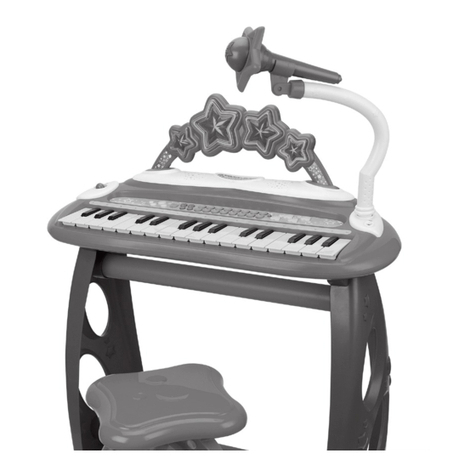
Chad Valley
Chad Valley Fun Damentals 6141S Assembly instructions
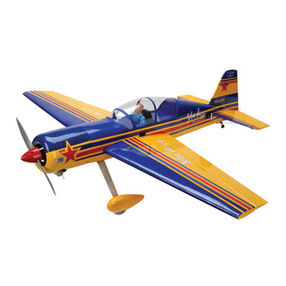
Seagull Models
Seagull Models SEA53A_1 YAK 54 Assembly manual

POLA G
POLA G 331767 quick start guide

MTHTrains
MTHTrains Premier BR 44 Steam Engine Operator's manual

LEGO
LEGO 21137 instructions
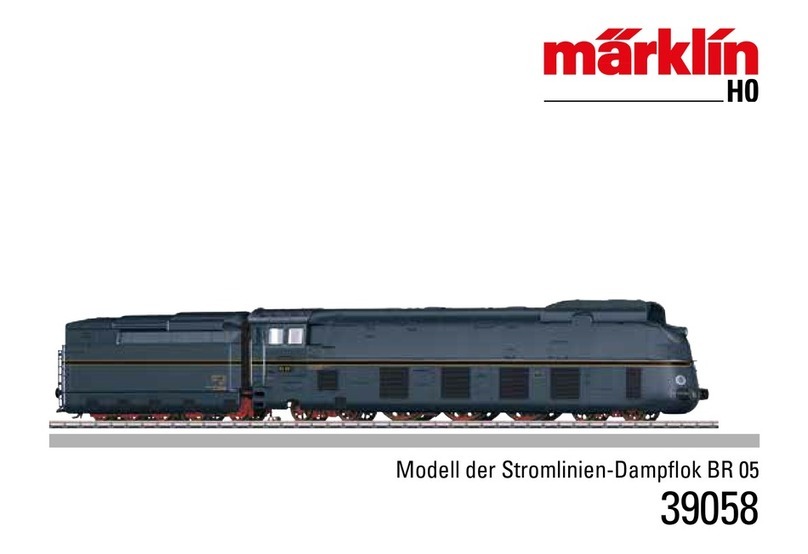
marklin
marklin BR 05 manual

Thomas & Friends
Thomas & Friends TrackMaster Thomas at Action Canyon Assembly instructions
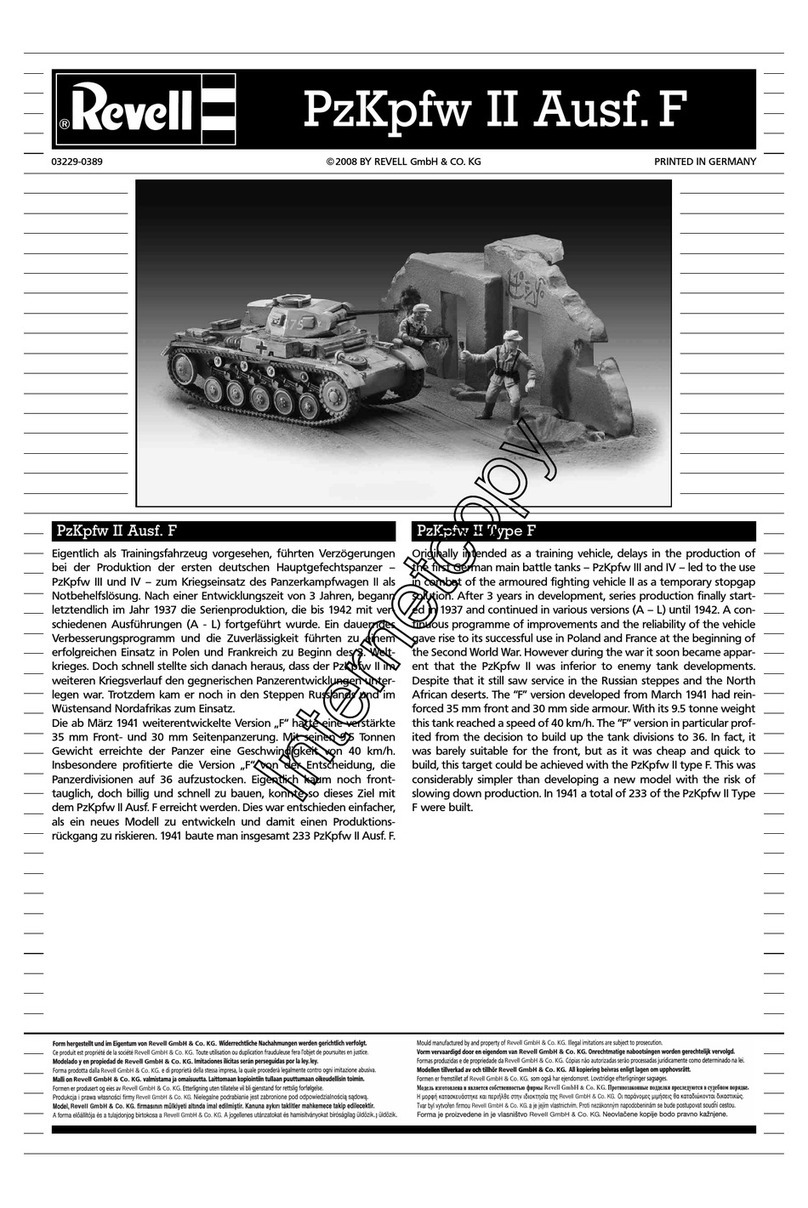
REVELL
REVELL PzKpfw II Ausf. F Assembly manual
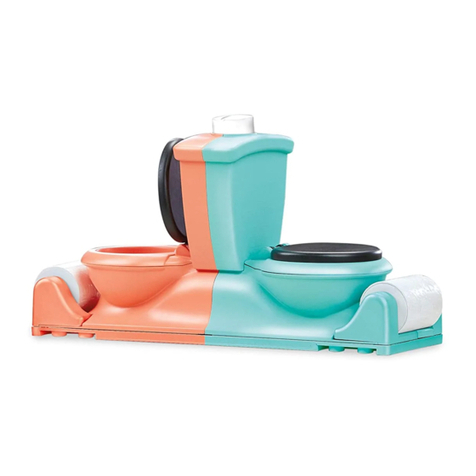
Hasbro
Hasbro Toilet Trouble Flushdown manual
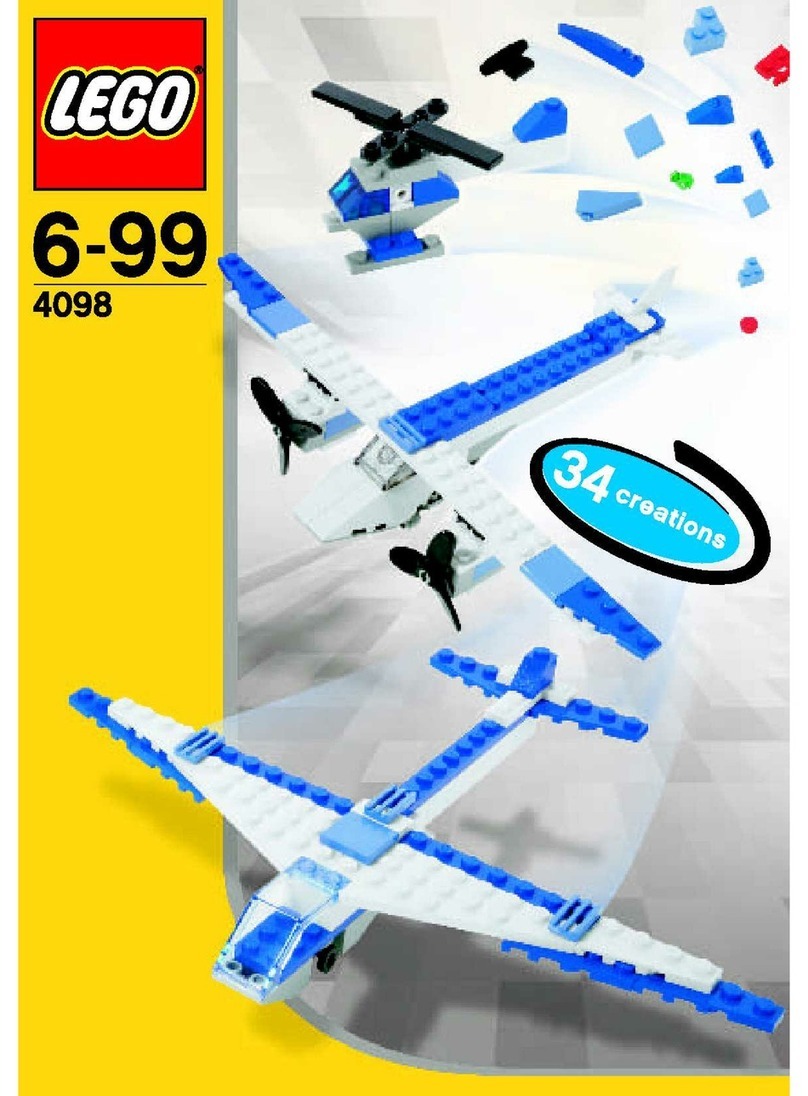
LEGO
LEGO 4098 Building instructions

Mega Bloks
Mega Bloks Barbie Build'n Play Chelsea Birthday Fun manual

